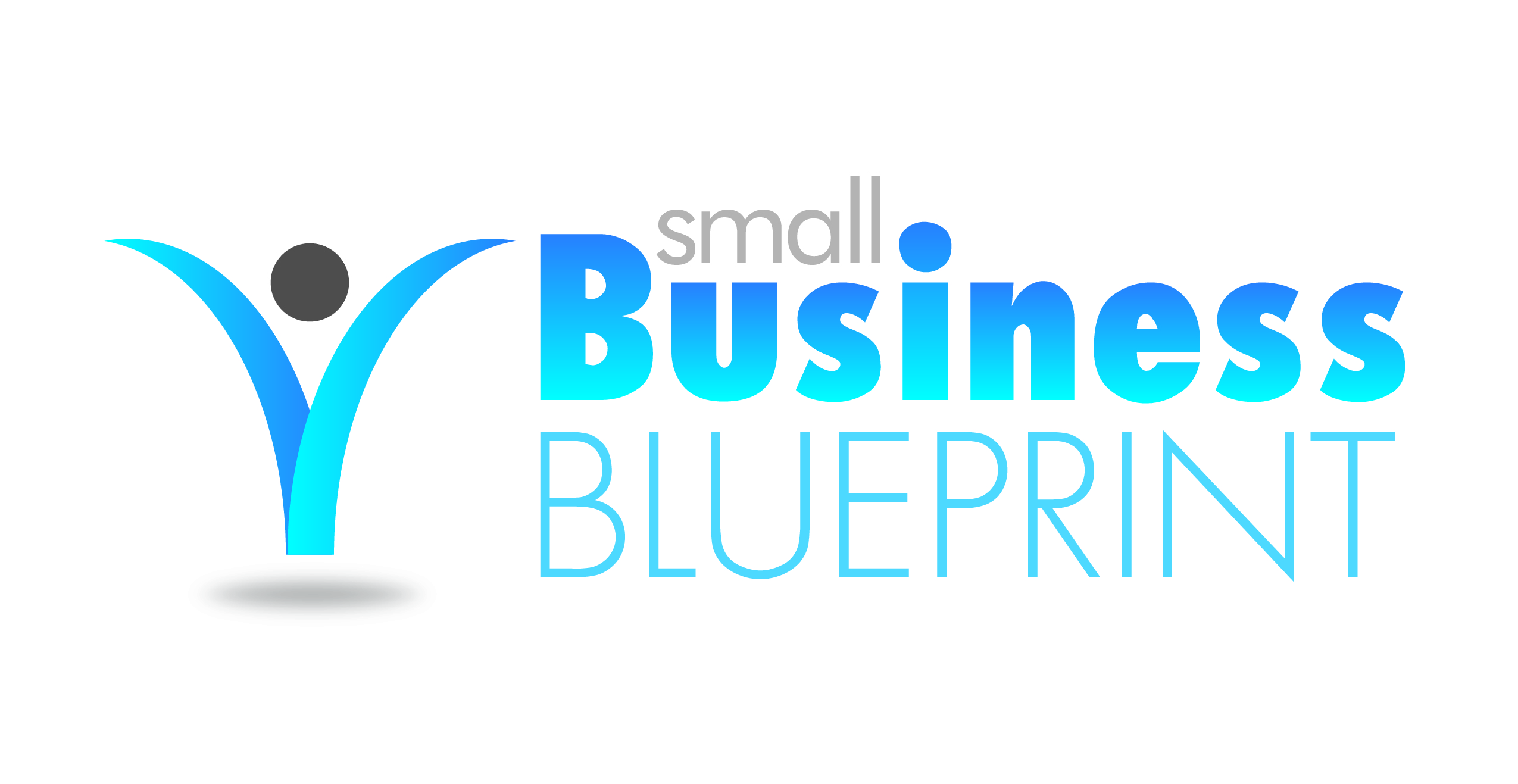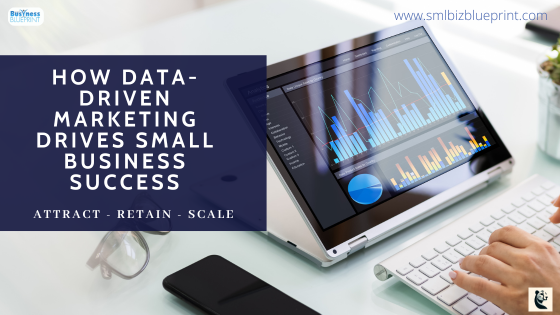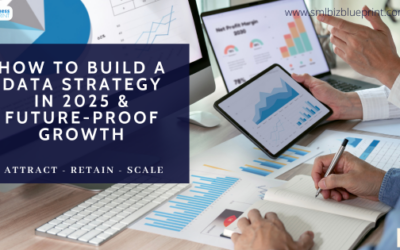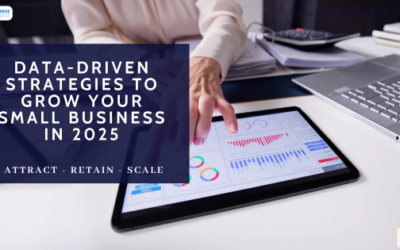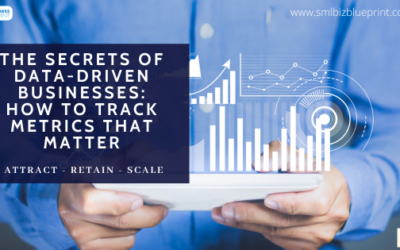In today’s business landscape, making decisions based on gut feelings or outdated methods is no longer enough.
As markets evolve and customers demand more personalised experiences, businesses that fail to leverage data risk falling behind.
In fact, 91% of companies report that data-driven marketing is crucial to their success, according to Forbes.
Yet, many small businesses still struggle to harness the power of data, feeling overwhelmed by technical jargon, complex tools, or limited resources.
But here’s the good news: implementing data-driven marketing doesn’t have to be complicated or expensive.
With the right strategies, tools, and guidance, you can use data to consistently attract the right customers, boost your ROI, and drive sustainable growth.
This post will explore how data-driven marketing can transform your business. From understanding its core principles to uncovering the tools and techniques you need, we’ll walk you through practical steps to unlock the full potential of your marketing efforts.
Whether you’re a seasoned marketer or a small business owner just starting, this guide is designed to help you overcome common challenges, maximise your budget, and achieve consistent growth.
Let’s dive in if you’re ready to turn your data into your most valuable marketing asset.

#1 What Is Data-Driven Marketing and Why Does It Matter?
Data-driven marketing is the process of using customer data to guide and optimise marketing strategies. Instead of relying on instincts or generic campaigns, businesses leverage insights from data to understand customer behaviour, preferences, and trends.
This approach ensures that every marketing effort is relevant, targeted, and more likely to resonate with the intended audience.
Why Data-Driven Marketing Matters
Enhanced Decision-Making: Businesses that use data are more equipped to make informed decisions. For instance, analysing which social media platform drives the most conversions helps allocate budgets effectively.
Better Targeting: Data-driven marketing allows for precise segmentation, ensuring the right message reaches the right people. According to a Salesforce report, 84% of customers say being treated like a person, not a number, is key to winning their business.
Improved ROI: Companies save money and achieve better results by focusing on what works and cutting out what doesn’t. Data-driven campaigns are shown to deliver 5-8x the ROI on marketing spend.
How It Works
Data Collection: Gather information from multiple touchpoints, such as website traffic, email interactions, social media, and customer feedback.
Analysis: Use analytics tools to uncover patterns and insights, like customer buying trends or content performance.
Implementation: Tailor marketing strategies based on the findings, whether that’s creating personalised email campaigns or optimising ad targeting.
Tips
- Start Small: If you’re new to data-driven marketing, begin with a single platform, such as tracking website analytics using Google Analytics, and expand as you gain confidence.
- Focus on Actionable Metrics: Avoid getting overwhelmed by data. Prioritise metrics like customer acquisition cost (CAC), click-through rates (CTR), and customer lifetime value (CLV).
- Invest in the Right Tools: Tools like HubSpot, Hootsuite, or Tableau can help simplify data collection and analysis, even for small teams.
By understanding and leveraging data, you can create marketing campaigns that truly resonate with your audience, helping your business grow in a sustainable and consistent way.
#2 The Core Benefits of Data-Driven Marketing for Small Businesses
Every marketing dollar must count for small businesses navigating tight budgets and competitive markets. Data-driven marketing empowers businesses to make smarter decisions, target the right audience, and achieve consistent growth without wasting resources.
Businesses can craft campaigns that speak directly to their audience’s needs and preferences by leveraging customer insights, driving higher engagement and better results.
Personalisation That Resonates
Data-driven marketing enables businesses to create personalised experiences for customers. Rather than sending generic messages, you can tailor your approach to individual preferences.
Research shows that 80% of customers are more likely to make a purchase when brands offer personalised experiences (Epsilon).
Improved Resource Efficiency
Small businesses often operate with limited budgets and resources. Data-driven marketing helps identify which channels, messages, and campaigns deliver the highest return on investment (ROI).
This eliminates guesswork and ensures that time and money are spent effectively.
Informed Decision-Making
With data at the core of your marketing efforts, decisions are no longer based on hunches or assumptions. By analysing customer behaviour, purchase patterns, and engagement rates, businesses can predict what works and what doesn’t.
Stronger Customer Relationships
Using data to understand customer needs fosters trust and loyalty. When customers feel understood and valued, they are more likely to return. A Salesforce study found that 62% of customers expect companies to anticipate their needs.
Tips
- Leverage Free Analytics Tools: Platforms like Google Analytics and Facebook Insights offer valuable data about customer behaviour and campaign performance without extra costs.
- Segment Your Audience: Use data to divide your audience into smaller groups based on demographics, buying habits, or preferences for more targeted marketing.
- Test and Learn: Run A/B tests on different campaigns to identify what resonates best with your audience, refining your approach over time.
Small businesses can build more effective campaigns, enhance customer experiences, and drive sustainable growth by focusing on the core benefits of data-driven marketing.
When implemented strategically, even limited resources can deliver significant returns.
#3 How to Start Using Data-Driven Marketing: Tools and Techniques
Embarking on a data-driven marketing journey may seem daunting, especially for small businesses with limited resources.
However, with the right tools and techniques, you can gather valuable insights, optimise campaigns, and create a strategy that delivers results. The key is to start small, focus on actionable data, and build your expertise over time.
Collect Relevant Data
The foundation of data-driven marketing is collecting data from multiple touchpoints to gain a complete view of your audience.
Sources of Data:
- Website analytics: Understand visitor behaviour and conversion paths using tools like Google Analytics.
- Social media insights: Platforms like Facebook and Instagram provide metrics on engagement, demographics, and reach.
- CRM systems: Track customer interactions, purchase history, and preferences to personalise marketing.
- Surveys and feedback: Direct customer feedback reveals insights that raw data might not capture.
Analyse the Data
Once data is collected, the next step is to turn it into actionable insights. This involves identifying trends, patterns, and opportunities that can guide your marketing decisions.
Tools for Analysis:
- Google Analytics: Monitor website performance, audience demographics, and conversion rates.
- HubSpot: A CRM tool to manage customer data, email campaigns, and marketing automation.
- Tableau or Power BI: Visualize complex data for easier interpretation.
Implement and Optimize
Put your data insights into action by creating tailored campaigns that align with your audience’s preferences and behaviours. Continuously monitor the performance of these campaigns to refine your approach.
Key Strategies:
Personalised emails: Use data to send offers and product recommendations based on customer behaviour.
Optimised ad targeting: Focus on platforms and audiences with the highest engagement and conversion rates.
A/B testing: Experiment with different headlines, CTAs, or visuals to determine what resonates best with your audience.
Tips
- Start with Free Tools: If you’re new to data-driven marketing, use free tools like Google Analytics or Facebook Insights to gather and analyse data.
- Focus on a Single Metric: Avoid getting overwhelmed by data. Pick one key metric (e.g., conversion rate or customer lifetime value) and work on improving it.
- Keep Testing and Learning: Run small-scale experiments (e.g., A/B tests) to discover what works and refine your strategy over time.
By starting small and focusing on essential tools and techniques, you can build a solid foundation for data-driven marketing. Over time, as you refine your skills and strategies, you can leverage data to achieve even greater results.
Simplify. Scale. Succeed.
Pulse gives you the tools and knowledge to streamline your operations and focus on growth.
Subscribe today and start transforming your business
#4 Overcoming Challenges in Implementing Data-Driven Marketing
While the benefits of data-driven marketing are undeniable, implementing it can come with hurdles, particularly for small businesses with limited resources or expertise.
Common challenges include data accuracy, budget constraints, and technical skill gaps.
The good news?
With the right approach, these obstacles can be managed effectively, enabling your business to harness the power of data.
Challenge: Ensuring Data Accuracy
Inaccurate or outdated data can lead to misguided decisions and wasted resources. Ensuring data accuracy is critical to building a successful strategy.
Solution: Regularly audit and clean your data to eliminate duplicates, outdated information, and errors.
Challenge: Budget Constraints
Small businesses often lack the resources to invest in advanced tools or hire dedicated data analysts. This can make implementing data-driven marketing seem out of reach.
Solution: Start small with free or affordable tools like Google Analytics, HubSpot’s free CRM, or Mailchimp for email marketing.
Challenge: Technical Skill Gaps
Interpreting and utilising data effectively requires a certain level of expertise, which may be lacking in small business teams.
Solution: Invest in basic training for your team or consider outsourcing data analysis to freelance experts or agencies. Many tools like Canva, Mailchimp, and Google Analytics offer beginner-friendly tutorials.
Challenge: Fragmented Data Sources
Many businesses collect data from multiple platforms (social media, website, CRM) but struggle to integrate it into a cohesive strategy.
Solution: Use tools like Zapier or Make (formerly Integromat) to automate data integration across platforms, creating a unified view of your customers.
Tips
- Prioritise Simplicity: Focus on one or two critical data sources to start (e.g., website traffic and email performance) rather than tackling everything at once.
- Leverage Free Training Resources: Platforms like YouTube, HubSpot Academy, and Google Skillshop offer free tutorials to help you upskill your team.
- Start with Small Experiments: Run A/B tests on a limited scale to build confidence and gradually expand as you see results.
By addressing these challenges proactively, small businesses can adopt data-driven marketing without feeling overwhelmed.
With careful planning and incremental implementation, you’ll soon see the benefits of data-driven decision-making for your marketing efforts.
#5 Leveraging AI and Predictive Analytics in Your Marketing Strategy
In the era of big data, artificial intelligence (AI) and predictive analytics are game-changers for businesses looking to maximise their marketing impact.
These technologies help businesses understand customer behaviour and anticipate future actions, enabling smarter, more effective campaigns.
For small businesses, adopting AI and predictive analytics can significantly enhance decision-making, improve personalisation, and optimise marketing performance.
Understanding AI in Marketing
AI enables businesses to process large amounts of data quickly and uncover insights that would otherwise be impossible to detect.
From analysing customer preferences to automating repetitive tasks, AI simplifies marketing processes and improves efficiency.
Applications of AI:
Chatbots: Provide 24/7 customer support while learning from interactions to improve responses over time.
Content Creation: AI tools like ChatGPT assist in generating email copy, blog posts, or product descriptions.
Audience Segmentation: AI algorithms group customers based on behaviour, interests, or demographics for more targeted campaigns.
How Predictive Analytics Enhances Marketing
Predictive analytics uses historical data and machine learning algorithms to forecast future customer behaviour.
By understanding trends and patterns, businesses can make proactive decisions.
Applications of Predictive Analytics:
Personalised Recommendations: Suggest products or services based on past purchases or browsing behaviour.
Churn Prediction: Identify customers at risk of leaving and implement strategies to retain them.
Campaign Optimization: Forecast the performance of marketing campaigns and adjust tactics before launch.
Benefits of AI and Predictive Analytics for Small Businesses
Improved Efficiency: Automating data analysis and segmentation saves time and resources.
Enhanced Personalization: Deliver tailored experiences that resonate with individual customers.
Smarter Decision-Making: Use data-driven insights to refine strategies and maximise ROI.
Tips
- Adopt Beginner-Friendly Tools: Tools like HubSpot, Hootsuite, and Google Analytics 4 offer AI-powered features for small businesses.
- Start with a Single Use Case: Focus on one application, such as AI-driven email personalisation or churn prediction, to test the waters.
- Monitor and Iterate: Continuously evaluate the performance of AI tools and predictive analytics to fine-tune your strategies.
By leveraging AI and predictive analytics, small businesses can unlock the full potential of data-driven marketing. These technologies make it easier to anticipate customer needs, optimise campaigns, and stay ahead of the competition—all while saving time and resources.
Start small, explore the tools available, and watch your marketing strategy transform.
#6 How Data-Driven Marketing Boosts ROI and Customer Retention
Every business wants to maximise its return on investment (ROI) while keeping customers loyal.
Data-driven marketing makes this possible by helping companies to allocate resources effectively, target the right audience, and deliver personalised experiences that foster long-term relationships.
Small businesses can optimise their marketing spend by focusing on data and creating campaigns that resonate with their customers, ultimately boosting profitability and loyalty.
Optimising Marketing Spend for Better ROI
Data-driven marketing provides insights into which channels, campaigns, and strategies yield the best results. This allows businesses to allocate their budgets more effectively, cutting out underperforming tactics and focusing on high-value opportunities.
Personalisation Drives Engagement and Conversions
Personalised marketing is one of the most powerful tools for improving ROI. Businesses can increase engagement and drive higher conversions by tailoring content to match individual customer preferences.
In fact, 80% of consumers are more likely to purchase when brands offer personalised experiences (Epsilon).
Building Customer Loyalty with Data Insights
Retaining existing customers is significantly more cost-effective than acquiring new ones.
Data-driven marketing enables businesses to identify customer preferences, anticipate their needs, and engage with them consistently, building stronger relationships over time.
Predictive Analytics Improves Campaign Performance
By analysing historical data, predictive analytics helps businesses forecast customer behaviour and optimise campaigns before they launch.
This reduces trial-and-error and increases the likelihood of success.
Tips
- Track the Right Metrics: Focus on key performance indicators (KPIs) such as customer acquisition cost (CAC), lifetime value (CLV), and churn rate to measure ROI and retention effectively.
- Start with Email Campaigns: Use data to segment your email list and send personalised offers or product recommendations tailored to each customer’s preferences.
- Leverage Automation: Invest in marketing automation tools like Mailchimp or HubSpot to streamline data-driven campaigns and deliver timely, targeted communications.
By prioritising data in your marketing efforts, you can make smarter decisions, maximise your ROI, and create meaningful connections with your customers.
Whether it’s through personalised offers or predictive analytics, data-driven marketing is the key to sustaining both profitability and loyalty in a competitive market.

#7 Building Trust: Ethical Considerations in Data-Driven Marketing
In an era where data powers decision-making, consumers are increasingly concerned about how their personal information is collected, stored, and used.
While data-driven marketing offers immense benefits, businesses must navigate ethical challenges and prioritise transparency to build customer trust. When done right, ethical data practices comply with regulations and strengthen customer relationships and brand reputation.
The Importance of Transparency
Transparency is a cornerstone of ethical data-driven marketing. Customers expect businesses to be upfront about how their data is being used. A lack of transparency can lead to mistrust, damaged reputation, and even legal consequences.
What It Looks Like:
Clear and concise privacy policies that explain how customer data is collected, stored, and used.
Explicit consent requests for data collection, such as opt-ins for email subscriptions or tracking cookies.
Compliance with Data Protection Regulations
Regulations like the General Data Protection Regulation (GDPR) and the California Consumer Privacy Act (CCPA) mandate businesses to adopt ethical data practices. Compliance ensures that businesses handle data responsibly while avoiding hefty fines.
Key Requirements:
Allow customers to access, modify, or delete their data.
Obtain explicit consent before collecting personal information.
Ensure data security through encryption and regular audits.
Ethical Use of Personalization
Personalisation is one of the most significant advantages of data-driven marketing, but it must be done carefully to avoid crossing ethical boundaries. Overly aggressive or invasive personalisation can feel intrusive to customers.
What Works:
Use only the data necessary to enhance customer experience.
Avoid using sensitive information unless explicitly permitted.
Balance personalisation with privacy by respecting customer boundaries.
Educating Customers About Data Usage
Customers who understand how their data benefits them are more likely to trust a business. Transparent communication about how data enhances their experience can turn potential scepticism into goodwill.
How to Educate Customers:
Share examples of how their data leads to better service (e.g., personalised recommendations).
Use FAQs or blog posts to address common concerns about data usage.
Tips
- Communicate Clearly: Use simple, non-technical language to explain your data practices in privacy policies and consent forms.
- Implement Data Minimization: Collect only the data you need and avoid storing unnecessary information.
- Train Your Team: Ensure all employees handling data understand ethical practices and the importance of customer trust.
By adopting ethical data practices and being transparent about how customer data is used, businesses can build trust, foster loyalty, and differentiate themselves in a competitive market.
Ethical marketing is not just a legal necessity—it’s a strategic advantage that strengthens customer relationships while safeguarding your brand’s reputation.
#8 Real-Life Examples of Data-Driven Marketing Success Stories
Understanding the impact of data-driven marketing becomes easier when you see it in action. Large and small businesses have used data to transform their marketing strategies, boost customer engagement, and achieve remarkable growth.
These success stories showcase the power of leveraging customer insights to drive decisions and results.
Amazon: Personalization at Scale
Amazon has set the gold standard for data-driven marketing through its recommendation engine. By analysing customer purchase history, browsing behaviour, and even search patterns, Amazon provides personalised product suggestions that account for 35% of its sales.
Key Takeaway: Personalization drives engagement and increases sales. Even small businesses can replicate this approach by recommending products based on customer behaviour.
Example: A local bookstore can use past purchases to recommend new titles in genres a customer has previously explored.
Spotify: Hyper-Personalized User Experiences
Spotify leverages data to create highly personalised experiences for its users. The annual “Spotify Wrapped” campaign analyses listening habits to deliver individualised reports, making users feel recognised and valued.
This campaign has driven user engagement and increased social sharing, effectively boosting Spotify’s visibility.
Key Takeaway: Turning data into engaging, shareable content builds customer loyalty and attracts new users.
Example for Small Businesses: A fitness studio could send personalised “workout stats” to clients, showcasing the number of classes attended or calories burned in a year.
Starbucks: Data for Customer Retention
Starbucks utilises data from its loyalty program to enhance customer retention. By analysing purchase patterns, Starbucks sends personalised offers, such as discounts on frequently purchased items or rewards for consistent visits.
This strategy has significantly increased the brand’s customer lifetime value.
Key Takeaway: Loyalty programs integrated with data analytics can strengthen customer relationships.
Example for Small Businesses: A boutique coffee shop could offer discounts based on customer visits or preferences through a simple loyalty card system.
A Small Retailer: Optimizing Ad Spend
A small retail clothing store used Facebook Ads Manager to analyse the performance of their campaigns. Reviewing audience engagement data, they discovered that ads targeting customers aged 25-34 generated the highest ROI.
They reallocated their budget to focus on this segment, leading to a 25% increase in sales within two months.
Key Takeaway: Analyzing ad performance data helps identify and focus on high-performing segments, maximising ROI.
Tips
- Start with What You Have: Even if you don’t have access to advanced tools, use existing resources like Google Analytics or social media insights to understand your audience better.
- Experiment and Scale: Test small-scale personalisation strategies like email recommendations and expand once you see results.
- Learn from Competitors: Analyze what successful competitors in your industry are doing with data and adapt their strategies to fit your business.
By studying these success stories and applying their lessons to your business, you can harness the power of data-driven marketing to engage customers, boost ROI, and drive sustainable growth.
Whether you’re a global brand or a small local business, data-driven marketing principles remain the same: use data to understand your audience, personalise their experience, and deliver value consistently.
#9 Future Trends in Data-Driven Marketing: What to Expect
As technology advances and consumer expectations evolve, data-driven marketing is set to become even more powerful. From hyper-personalization to real-time analytics, emerging trends will enable businesses to connect with customers in innovative ways.
Staying ahead of these trends can help your business remain competitive and relevant in a rapidly changing landscape.
Hyper-Personalization: Tailored Experiences at Scale
Hyper-personalization goes beyond basic segmentation, using AI and machine learning to create deeply customised experiences.
Businesses analyse data from multiple sources, such as social media, purchase history, and real-time behaviour, to deliver content, products, and offers that resonate personally.
Future Impact: Businesses will leverage dynamic content in emails, ads, and websites that adjust to each user’s preferences in real time.
Real-Time Analytics for Agile Marketing
Real-time analytics is transforming how businesses respond to customer behaviour. Instead of waiting for post-campaign reports, marketers can access live data to adjust their strategies on the fly, improving outcomes and reducing waste.
Future Impact: Expect more businesses to adopt tools that provide immediate insights into campaign performance, enabling faster decision-making.
Voice Search Optimization
As voice-activated devices like Amazon Echo and Google Home become mainstream, voice search shapes the future of SEO and data-driven marketing. Optimising for voice search will require businesses to focus on conversational keywords and provide concise, actionable answers.
Future Impact: Businesses that optimise for voice search will capture a growing segment of mobile and smart home users.
Predictive Marketing Models
Predictive marketing models use machine learning to forecast customer behaviour, helping businesses effectively target their efforts. From predicting churn rates to identifying potential high-value customers, these models allow for proactive and precise strategies.
Future Impact: Predictive marketing will become more accessible to small businesses as tools become more affordable and user-friendly.
Ethical Data Practices and Privacy-First Marketing
As data privacy regulations evolve, businesses must focus on ethical data collection and usage. Consumers increasingly favour brands that prioritise transparency and security, making privacy-first marketing a critical trend.
Future Impact: Privacy-focused marketing will become a standard, not just a competitive advantage.
Tips
- Invest in Training: Stay informed about emerging tools and techniques through webinars, certifications, or online courses on AI and predictive analytics.
- Experiment with Real-Time Tools: Test tools like Google Analytics 4 or Hotjar to explore real-time data insights and improve agility.
- Prepare for Voice Search: Incorporate conversational keywords and questions into your content strategy to optimise for voice search.
By embracing these trends, businesses can future-proof their data-driven marketing strategies, ensuring they stay relevant and continue to meet evolving customer expectations.
The key is to remain agile, adapt to new technologies, and prioritise the customer experience in every decision.
Discover how AI and automation can transform your business.
Subscribe today to access expert advice and proven strategies tailored for business owners like you.
Join Our Newsletter
Conclusion
Data-driven marketing is no longer a luxury—it’s necessary for businesses striving for consistent growth in today’s competitive landscape. By leveraging customer insights, businesses can create targeted campaigns, maximise ROI, and build stronger relationships with their audiences.
Whether you’re a small business owner or an experienced marketer, the principles of data-driven marketing remain the same: start with reliable data, analyse it effectively, and use the insights to make informed decisions.
From understanding the fundamentals of data-driven marketing to exploring advanced tools like AI and predictive analytics, this guide has covered the key strategies for success.
We’ve also highlighted real-world examples, emerging trends, and practical tips to help you overcome challenges and implement effective data-driven strategies.
Now it’s your turn. Are you ready to unlock the power of data for your business?
Whether it’s improving customer retention, boosting ROI, or future-proofing your marketing strategy, data-driven marketing offers the tools and techniques to help you achieve your goals.
Take the first step toward smarter marketing today. Start by identifying one area of your marketing strategy where data could make the most significant impact.
Whether it’s tracking website analytics, personalising email campaigns, or optimising your ad spend, every step counts.
Your future in smarter marketing starts now—take action today!
FAQs
Data-driven marketing can feel overwhelming, especially for businesses new to leveraging customer insights for strategic decisions. To simplify the process, we’ve compiled answers to some of the most frequently asked questions about data-driven marketing.
These insights will help you understand the essentials and get started with confidence.
Q1: What Is Data-Driven Marketing?
Answer: Data-driven marketing involves collecting and analysing customer data to create more targeted, effective campaigns. It enables businesses to understand audience behaviour, predict future trends, and optimise marketing strategies for better ROI.
Q2: Why Is Data-Driven Marketing Important for Small Businesses?
Answer: Data-driven marketing helps small businesses use their limited resources effectively. By focusing on what works, small businesses can cut costs, improve customer engagement, and achieve sustainable growth.
Q3: What Tools Do I Need to Start Data-Driven Marketing?
Answer: Start with beginner-friendly tools such as:
Google Analytics: Tracks website traffic and user behaviour.
HubSpot CRM: Manages customer data and automates marketing efforts.
Mailchimp: Segments email lists and personalises campaigns.
Free tools can help you begin, and you can scale up to advanced platforms as your business grows.
Q4: How Can I Ensure My Data Is Accurate and Reliable?
Answer: Accurate data is crucial for effective marketing. Follow these steps:
Regularly clean your data to remove duplicates or outdated information.
Use trusted tools to collect and validate data.
Train your team on best practices for data entry and maintenance.
Q5: Is Data-Driven Marketing Suitable for My Industry?
Answer: Yes, data-driven marketing is versatile and can be applied across industries. Whether you’re in retail, healthcare, or professional services, understanding your audience through data is always beneficial.
Q6: What Metrics Should I Track for Effective Data-Driven Marketing?
Answer: The key metrics depend on your goals, but common ones include:
Customer Acquisition Cost (CAC): How much it costs to acquire a new customer.
Customer Lifetime Value (CLV): The total value a customer brings to your business over their relationship.
Conversion Rate: The percentage of users who complete a desired action, such as making a purchase.
Q7: How Can I Use Data Without Overwhelming My Team?
Answer: Focus on small, actionable steps:
Choose one or two metrics to prioritise at first.
Start with a single campaign, such as a personalised email or targeted ad, to see results.
Automate repetitive tasks to free up your team’s time.
Other Articles
The Best AI Solutions to Simplify Work for Small Business Owners
